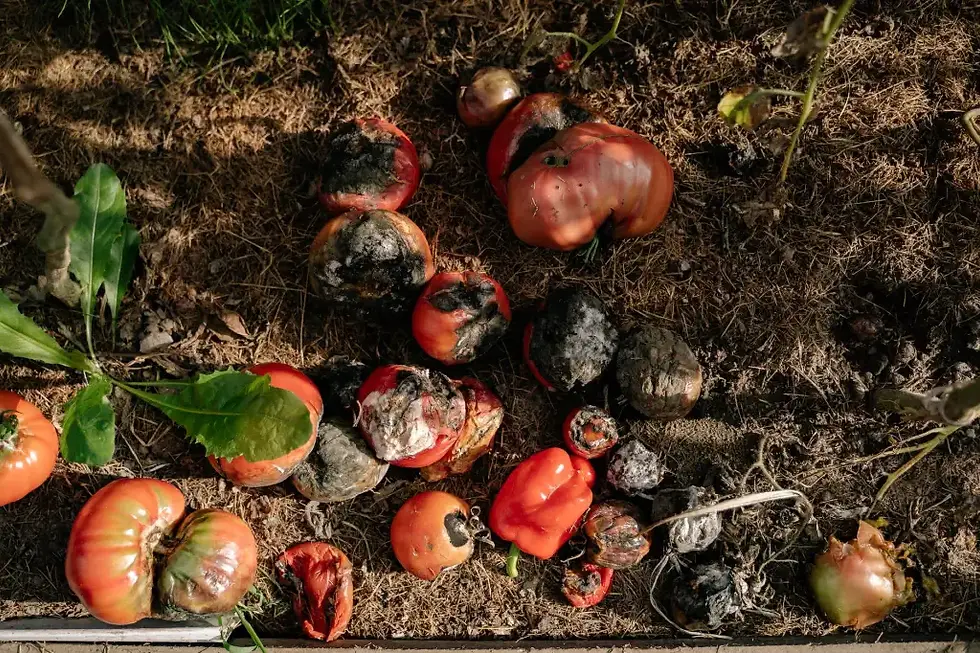10 Tips on How to Get Rid of Post-Harvest Losses in Farm Produce
- Matthew Mumo

- Jul 22, 2022
- 3 min read
Updated: Jan 27, 2023

Many farmers, especially in the countryside, experience great post-harvest losses. Majorly, this is due to the absence of necessary technology to store their crops after harvesting.
In addition, poor transport infrastructures cripple the farmers’ efforts to market their farm commodities.
Here are ten crucial tips to help improve post-harvest management.
Use of Cold Storage
Some fresh farm produce such as fruits go bad quickly. Adoption of cold storage can help mitigate this loss.
Cold storage allows you to keep your produce for longer. It offers you additional time to get it to the market.
One such technology is the CoolBot . This electrical device helps the room to become colder without freezing. The device is also affordable.
Use of Grain-Drying Technology
In many developing countries, farmers rely on natural sunlight to dry their grains before storage.
Unfortunately, the weather is not always conducive during harvesting. Damp weather conditions during harvest mean the grains may not achieve the required moisture levels.
Improperly dried grains will attract mold. If the moisture is not below 13 percent, farmers risk losing their grains.
One such technology is the use of the GrainPro Collapsible Dryer Case. It dries grains fast and in a protected manner.
This polyvinyl chloride sheet features the proper optimization for the absorption of solar energy.
Mechanized Shelling
Another helpful technology in the reduction of post-harvest losses involves mechanized shelling. With this technology, farmers can quickly remove their grains from the fields.
This technology makes large-scale shelling possible, especially of maize meant for commercial purposes. The technology is an excellent alternative to labor-intensive manual shelling.
Advantages of this technology are that it:
minimizes shattering of grains
minimizes grain spillage
reduces grain breakage
ensures that the grain is completely separated from the chaff
it’s quicker
Manual threshing accounts for about 6% of post-harvest grain losses. However, low-cost threshing systems can help remedy the situation.
Air-Tight Storage Technology
It involves a method of storage that is devoid of any chemicals. Farmers put their grains in containers that do not allow air in or out, such as metallic silos.
It works by decreasing the oxygen and increasing carbon dioxide, eventually killing all insects inside.
The technology modifies the atmosphere surrounding the grains inside the air-tight container.
It ensures that no insect pests survive or thrive inside the container. Also referred to as hermetic storage.
Chemical Fumigation of Grains
This technology helps to reduce grain loss during the storage stage. It involves the use of synthetic insecticides to control pests.
In developing countries, Methyl Bromide is among the most common chemicals. However, there is also the use of Phostoxin, especially in completely dry maize.
The other option for farmers would be to apply Actellic Super on their grains, then store them inside polypropylene bags. The practice is widely practiced, especially in Kenya and Tanzania.
Use of Natural Insecticides
Some plant species and their extracts possess natural pesticide qualities. The practice is common in many African and Asian countries.
These plant chemicals are environment-friendly and safe for farmers.
Good examples are leaves and oil extract from Chenopodiaceae. This herb, which is readily available in India, helps protect stored grains from damage.
Doing a Maturity Assessment
Farmers should ensure they pick their crops at the right stage of maturity.
If you have employed people to pick for you, ensure you train them properly on how to identify the mature crop.
The online platform is awash with information on maturity indices. There are details on when each crop is ready for harvest.
This information helps farmers and can reduce post-harvest losses.
Proper Handling
A cut or a crack in a fruit opens a pathway for bacteria and other microorganisms. To avoid creating such entry points, use sharp harvesting knives that are also clean.
Moreover, train your pickers on the correct picking methods to avoid any fruit injuries.
During transportation, avoid overloading because it compresses the fruits at the bottom and crushes them. The loading should also be gentle.
Adopting Digital Technology to Find Markets
The lack of ready markets is a demotivating factor among many farmers. They hesitate to venture into huge agricultural investments for fear of losses.
It’s here that the use of digital technology such as mobile phones and radio communication comes in. Farmers can also make use of smartphone Apps such as Facebook and WhatsApp.
These technologies help farmers know where to get ready markets for their produce. Consequently, it helps to minimize the loss of grains after harvest.
Use of Moisture Meters
Having access to the right technologies is crucial in eliminating post-harvest loss.
Moisture meters ensure grains have the correct humidity for storage.
When you store grains in their right moisture, they can hardly go bad.
Consequently, this post-harvest technology helps to reduce loss after harvesting.
Conclusion
Correctly implementing the above measures will save farmers from losing their harvest.
In conjunction with farmers, governments and private sector stakeholders can work together to achieve post-harvest food safety.












Comments